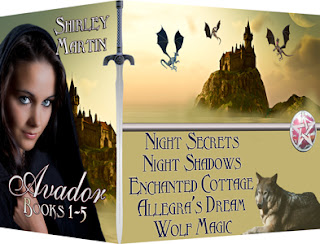 |
| Buy at Amazon |
My very first novel ever, written on wide rule notebook paper when I was ten years old, featured a heroine named Shelton who had a lot of husky dogs and after she'd grown up, went on to have a lot of babies. I'm not sure at age ten I actually knew where the babies came from, but that didn't matter. My chapters went something like, "Spring came and Shelton had another baby, this one she named Thomas." You see, the naming (of dogs or humans) was the fun part for me.
I've always loved names and naming characters was (and still is) a huge part of my writing process. Back then I chose names because I liked them. I had no idea there was more to naming characters than liking the favorite nom du jour.
An early editor set me straight on the importance of choosing names. First tip, readers want to be able to pronounce a name. I might think Crouix is a cool moniker, but when you're reading if you're not sure how to say it, the nagging issue can pull you out of the story. If I insist on using it, perhaps early on I can make a reference to someone saying, "Crouix rhymes with Roo" or something similar, just to give the reader a hint.
Second tip, the main characters names in a book should start with different letters. I shouldn't have Susan fall in love with Steve who's son's name is Sam and his boss's name is Stan. Too much! I need to use a variety of letters to make it easier for the reader to keep characters straight.
Third tip, be very careful changing names mid-story. I've done this, and it can be done if you're very careful. If halfway through the story, Rob doesn't fit anymore and I want the hero to be called Marc, it's okay to change. BUT you have to catch every instance of usage (a stray Rob in a story about Marc will confuse even the best editor) and worse, if you use the search and replace feature, disaster can and has happened. Changing all instances of Rob to Marc may result in a bank being Marced instead of Robbed!
I still break rules sometimes, but I try to keep what I've learned about names in mind. I want the reader to feel comfortable when pronouncing the names I've chosen. I called the heroine in Blame it on the Stars 'Catlin' so people could call her 'Cat' as a nickname. But friends who discuss the book with me invariably call her everything from 'Caitlin' to 'Catherine' and several names in between. And to top it off, Catlin named her kids Cristian, Charlie and Clarissa. I know, sometimes I'm just a rebel.
Find Jamie Hill and all her glorious names at Books We Love:
and at her website: www.jamiehill.biz
[...and for the record, Jamie Irene was named after her father James and her grandmothers, both of whose middle names were coincidentally Irene. Jamie herself always thought Irene sounded old, and wished her middle name was Elizabeth. So she chose that as her Confirmation name during Eighth grade at Catholic school.]
















.jpg)






